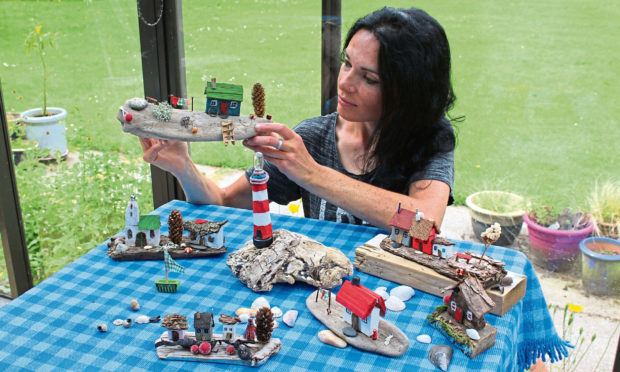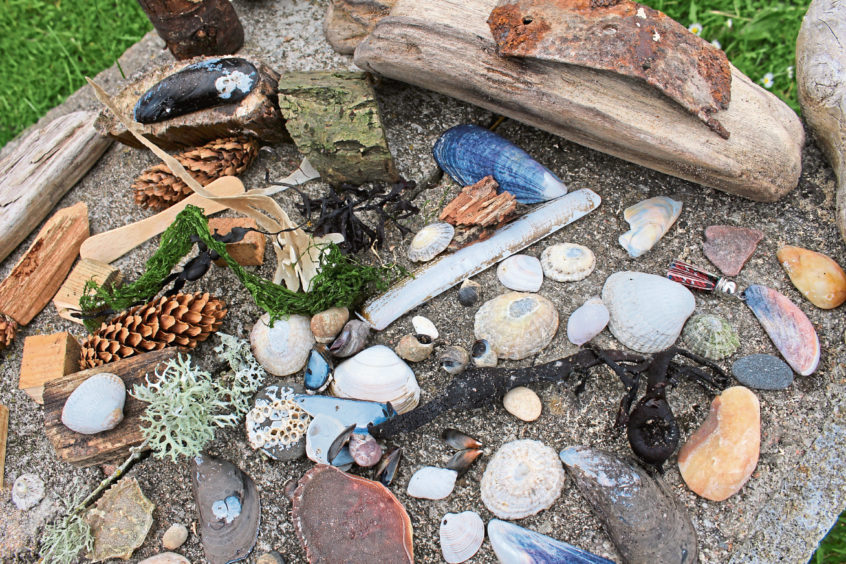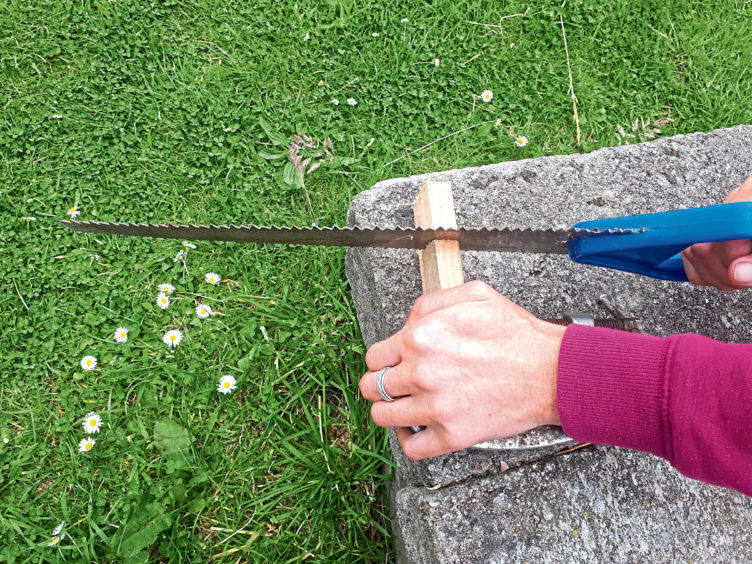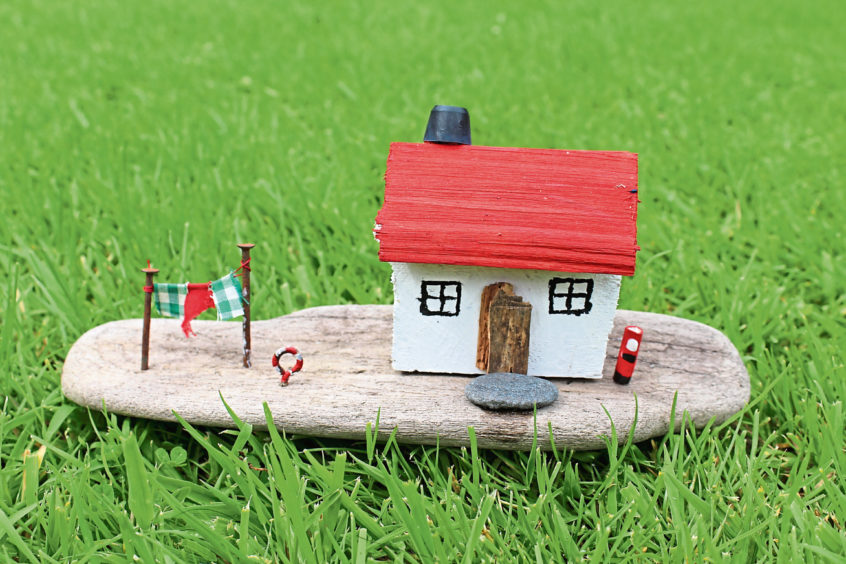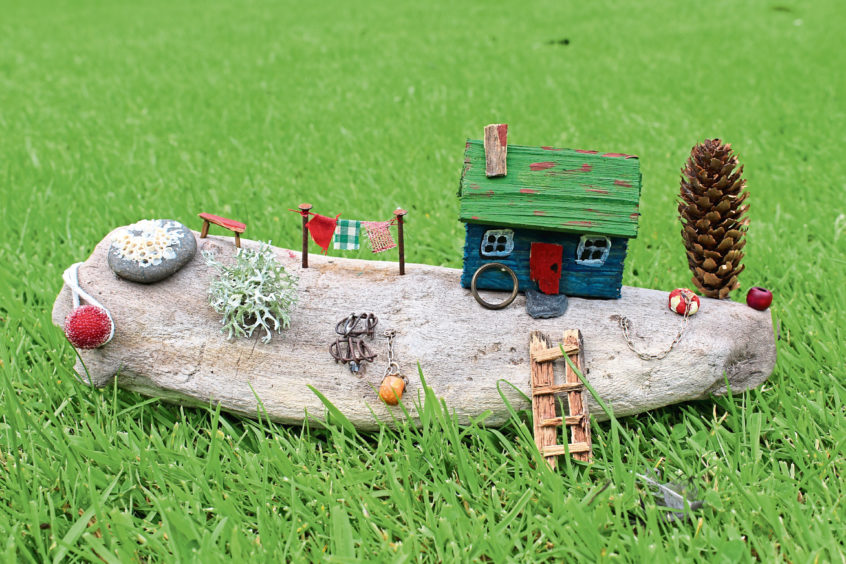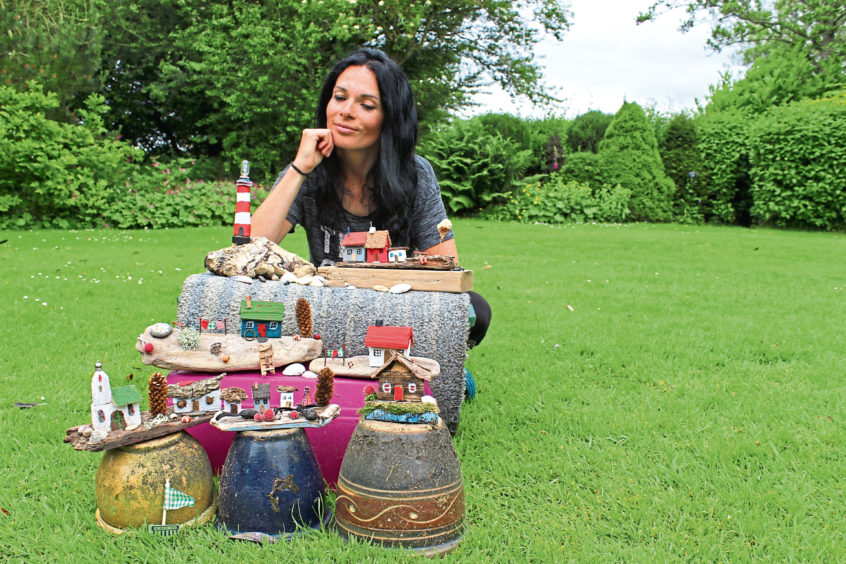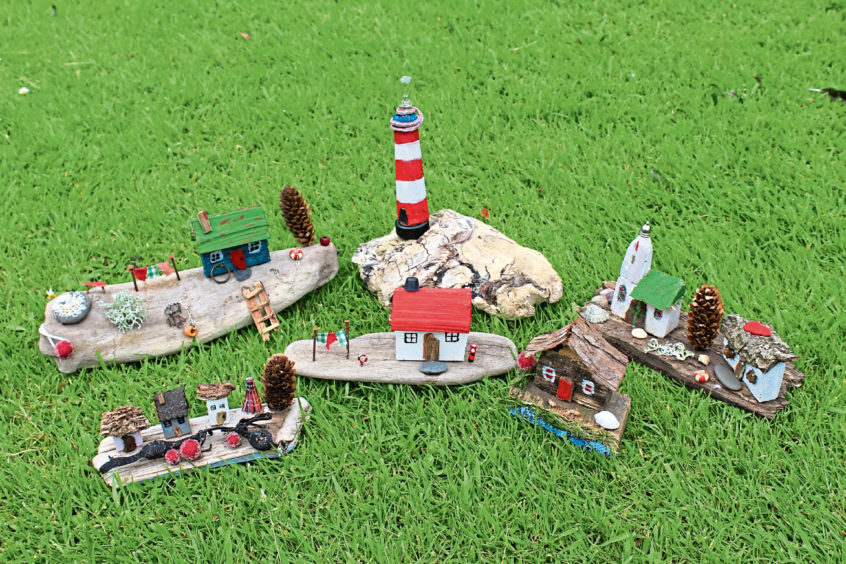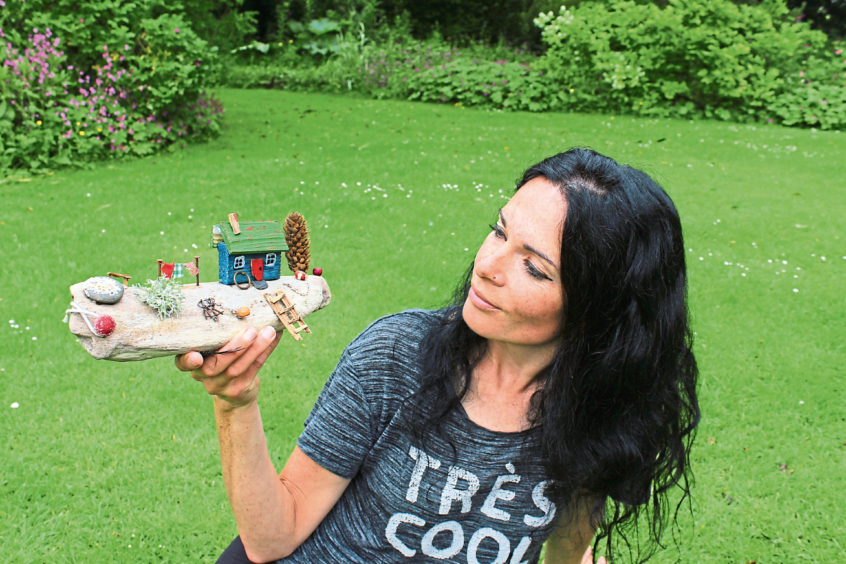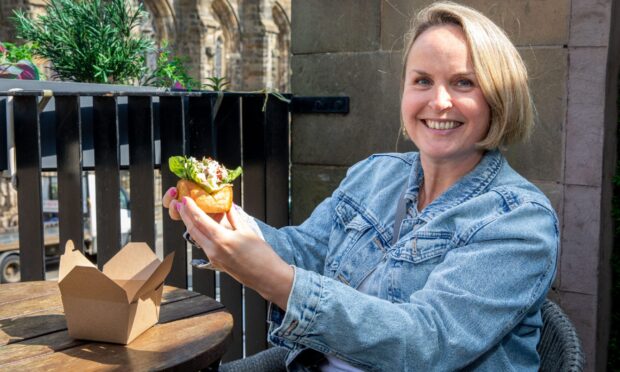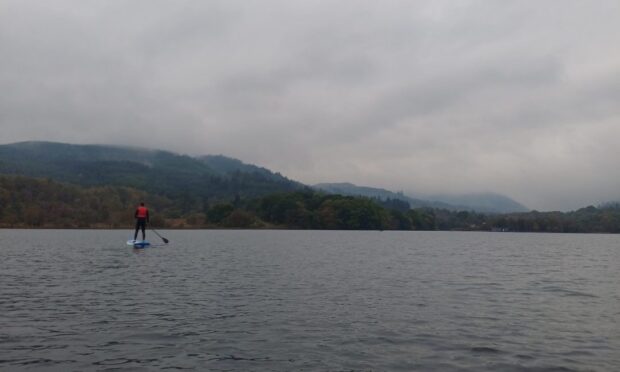A trip to a nearby beach inspires Gayle to make her very own driftwood village…
A dilapidated fisherman’s hut. A row of brightly painted coastal cottages.
A jumble of flotsam and jetsam piled up on the shore. A wind-blasted tree leaning at a jaunty angle.
Welcome to my very own driftwood village – a lockdown craft project cobbled together from hunks of driftwood and random seaside scraps.
The idea came to me as I was strolling along Forvie Sands in Aberdeenshire.
Having spotted some unusual pieces of driftwood, I popped them into my bag and wondered if I could “do” something with them.
It dawned on me that indeed, I could use them as platforms upon which to build a miniature coastal village, or even a series of islands.
Scouring the beach for shells, strips of dried seaweed and any odds and ends that might be used in my creation, I took them home, excitement building at the prospect of the project before me.
Laying all my treasures out on the lawn, I had a minor panic. Where on earth would I begin?
Inspired by a quick search of Etsy – online seller of all things crafty – I found loads of driftwood cottages, islands and villages, some retailing for decent sums of money.
OK, so I had the driftwood and a load of beach detritus, but I was a long way from producing anything resembling any of these stunning creations.
I had to start somewhere, and so I started making cottages out of old blocks of wood I found lying around a shed.
Most of these off-cuts were weird shapes so I had a tricky job shaping them into little squares and rectangles to represent the cottage frames.
Hacksaws, hand saws, chisels and a vice were in force and being rather clumsy, it’s a miracle no fingers were lost in the process.
The next task was to craft cottage roofs from scratch. This, I soon discovered, was extremely difficult. Possessing neither the right tools nor materials, I searched high and low for bits of wood that might look the part, and failed.
Instead, I had to do my own Frankenstein job of super-gluing ill-shaped bits of wood, chipboard and bark on to the blocks, resulting in some really strange looking edifices.
It was rather laborious and in some cases, a bit of a botched job.
Frustrated, I had a peek online to see what the experts had done and it appeared that many had cheated.
Yep, they had bought ready-made cottages with slanted roofs, saving them the job of making them themselves!
I battled with myself for a bit and then reasoned that my ramshackle and extremely motley collection of roofs would have to do as I wasn’t going to “go commercial”.
And I suppose there’s something quite satisfying about DIYing the whole caboodle, even if the final product doesn’t look remotely professional.
Moving on, I painted the cottages, made doors and chimneys from tiny scraps of wood, and began thinking about what would go where.
With seven pieces of driftwood and 11 buildings, I could create a decent-sized village.
One cottage became the post office – painted red and white – boasting a post box crafted from a bit of cardboard.
Another edifice became the church, with a steeple, “stained glass” windows and a bell, and sharing its “island” with a rustic fisherman’s cottage.
Washing lines were crafted from rusty nails, strips of thread and old scraps of cloth while screws, beads, bits of rubber and old Christmas decorations were transformed into lifebuoys, some with chains attached.
I even made a wee wooden ladder, two benches and a couple of lobster creels, although I’m not sure anyone but me would be able to identify them as such.
A really wonky shaped piece of driftwood supported a lighthouse – made out of a toilet roll and an old light bulb. It’s at a bit of an odd angle, as are many of my buildings, but it’s yet to topple over.
Trees were fashioned from pine cones and dried flowers and a rubber was cut in half to become a boat.
Its mast was crafted from a matchstick and the sail made from a tiny scrap of cloth.
Dried-up seaweed and shells were strewn randomly throughout my village and, sitting back to admire my handiwork, I realised things were starting to take shape.
However, a few things troubled me.
I wasn’t keen on the cottage windows – given the chance, I’d do them differently.
Right now, I reckon some look more sinister than quaint – more Village of the Damned than Little House on the Prairie.
Another thing that traumatised me on my creative journey was encountering a maggot.
It dropped out of a shell, writhed around grotesquely and then proceeded to fall on to my trousers.
The lesson here is to shake out everything you bring back from the beach before you unwittingly invite any visitors into your home.
As time wore on, I realised my village might never be finished – the project had become addictive!
But because I had to write about it – right here – I paused and took pictures of the work in progress.
Perhaps enough is enough – too many features might spoil it.
But there’s a massive part of me that wants to add a pub, a school, a shop and maybe a few inhabitants.
The odd horse, dog, cow and sheep wouldn’t go amiss, either.
The question of what to do with my coastal village now remains.
It’s too big and clunky to display on a shelf and it’s not good enough to sell on Etsy.
Plus, I’ve become strangely fond of it, even if it is rather childlike and simple.
For now, it sits on a table in the conservatory, and the temptation grows to keep adding to it.
I’ve since been back to another beach and collected a few more bits of driftwood.
One is round and clunky while another is rectangular with a series of long, rusty nails poking out of it.
I’m eyeing the round bit up for another island and the other for a wacky wall clock! I’ll keep you posted…
info
The best time to find driftwood and other debris on the beach is early in the morning or late afternoon, after a storm, or when it is low tide.
Fancy crafting your own driftwood creation? For inspiration, see etsy.com
